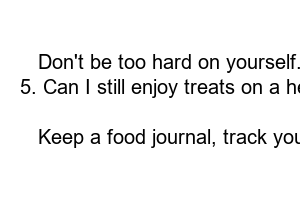스위치온 다이어트 식단표
**Switching Diet Table: A Guide to a Healthier Lifestyle**
Are you looking to make a change in your diet but don’t know where to start? Switching up your diet can be a daunting task, but it doesn’t have to be. By following some simple steps and making gradual changes, you can ease into a healthier lifestyle without feeling overwhelmed. In this blog post, we will guide you through the process of switching your diet table and help you make the transition smoothly.
**Assess Your Current Diet**
Before making any changes, it’s important to take a look at your current diet and identify areas that need improvement. Are you consuming too much processed food? Lack of fruits and vegetables in your diet? By pinpointing your weak points, you can start making small adjustments to improve your overall health.
Making a Plan for the Switch
Creating a plan for switching your diet table is crucial for success. Start by setting specific, achievable goals and outlining the steps you will take to achieve them. Whether it’s increasing your intake of fruits and vegetables, cutting down on sugary snacks, or incorporating more whole grains, having a clear plan will help you stay on track.
Gradual Changes for Long-term Success
Instead of making drastic changes overnight, opt for gradual adjustments to give your body time to adapt. Start by making one small change each week, such as swapping out sugary drinks for water or adding one extra serving of vegetables to your meals. Over time, these small changes will add up to significant improvements in your diet and overall health.
Incorporating Balanced Meals
A balanced diet is key to good health, so be sure to include a variety of nutrients in your meals. Aim for a mix of protein, carbohydrates, and healthy fats in each meal to ensure you are getting all the essential nutrients your body needs. Incorporate colorful fruits and vegetables, whole grains, lean proteins, and healthy fats into your diet to promote optimal health.
Listening to Your Body
Pay attention to how your body responds to the changes in your diet. If you find yourself feeling more energized, experiencing fewer digestive issues, or seeing improvements in your overall health, you’re on the right track. Use these cues from your body to fine-tune your diet and make additional improvements as needed.
Finding Support and Accountability
Making changes to your diet can be challenging, so don’t be afraid to seek support from friends, family, or even a nutritionist. Having someone to hold you accountable and provide encouragement can make all the difference in sticking to your new diet plan. Share your goals with others and celebrate your successes along the way.
**Summary**
Switching your diet table doesn’t have to be overwhelming. By assessing your current diet, making a plan, incorporating gradual changes, and listening to your body, you can ease into a healthier lifestyle with long-term success. Seek support and accountability to stay on track and celebrate your progress along the way.
**FAQs**
1. How quickly should I switch my diet table?
It’s best to make gradual changes to give your body time to adapt.
2. What are some key nutrients to include in a balanced diet?
Aim for a mix of protein, carbohydrates, healthy fats, fruits, vegetables, and whole grains.
3. How can I stay accountable when switching my diet table?
Seek support from friends, family, or a nutritionist to help you stay on track.
4. What if I slip up on my new diet plan?
Don’t be too hard on yourself. Remember that change takes time, and it’s okay to have setbacks.
5. Can I still enjoy treats on a healthier diet?
Yes, moderation is key. Treat yourself occasionally to maintain a healthy balance.
6. How can I track my progress when switching my diet table?
Keep a food journal, track your energy levels, and note any changes in your overall health to monitor your progress.

